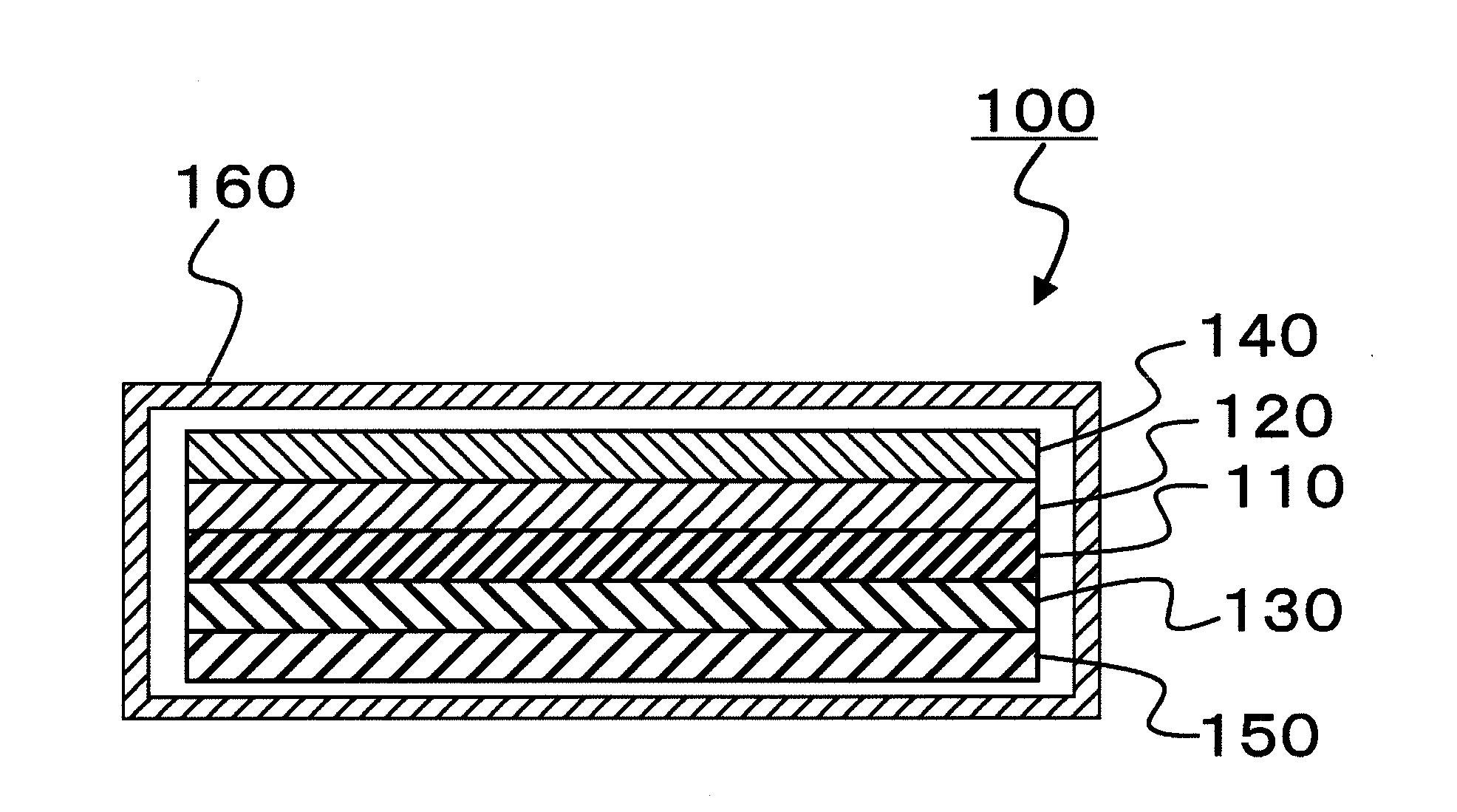Electrolyte solution and lithium ion secondary battery using the same
a technology of lithium ion secondary batteries and electrolyte solutions, which is applied in the direction of primary cells, non-aqueous electrolyte cells, electrochemical generators, etc., can solve the problems of further improvement of safety, and achieve the effect of high battery characteristics and high safety
- Summary
- Abstract
- Description
- Claims
- Application Information
AI Technical Summary
Benefits of technology
Problems solved by technology
Method used
Image
Examples
example 1
(1) Preparation of an Electrolyte Solution
[0148]Ethylene carbonate and methyl ethyl carbonate were mixed in a mass ratio of 1:2; LiPF6 was added to the mixed solution so that the concentration became 1 mol / L to fabricate an ungelatinized electrolyte solution (X) (hereinafter, an electrolyte solution before addition of a gelling agent is referred to as “base electrolyte solution”). A compound represented by the formula (8) shown below as a perfluoro compound and (A) tris(2,2,2-trifluoroethyl)phosphite as a specific additive were added to the base electrolyte solution (X), heated at 70° C. and homogeneously mixed. The mixed solution was thereafter cooled to 25° C. to obtain an electrolyte solution (a), and the evaluation described in the above-mentioned “(i) Evaluation of the gelling power of an electrolyte solution” was carried out. The results are shown in Table 1 (Table 1-1).
examples 2 to 18
[0149]Electrolyte solutions (b), (c), (d), (e), (f), (g), (h), (i), (j), (k), (l), (m), (n), (ad), (ae), (af) and (aj) were prepared as in Example 1, except for using, as a perfluoro compound, one of the compounds represented by the formula (8) shown above, and the following formulae (9), (10), (11), (12), (13), (14), (15) and (16), and using, as a specific additive, one of (A) tris(2,2,2-trifluoroethyl)phosphite, (B) trimethyl phosphite, (C) 2,2,3,3,3-pentafluoropropyl-1,1,2,2-tetrafluoroethyl ether, (D) 1,1,2,2-tetrafluoroethyl-2,2,3,3-tetrafluoropropyl ether and (E) N-methylbisfluoroacetamide, and altering the heating temperatures. For these electrolyte solutions, the evaluation described in the above-mentioned “(i) Evaluation of the gelling power of an electrolyte solution” was carried out. The results are shown in Table 1 (Table 1-1 and Table 1-2). Here, in Table 1, the case where the heating temperature is indicated as “−” means no heating (hereinafter, the same).
CF3CF2CH2OCF2...
example 19
Assembling of a Battery
[0161]A laminate, in which the positive electrode (α) and the negative electrode (β) fabricated as described above were overlaid on both sides of a separator (the membrane thickness: 25 the porosity: 50%, and the pore diameter: 0.1 μm to 1 μm) composed of a polyethylene, was inserted in a SUS-made circular disk-type battery case. Then, 0.5 mL of the electrolyte solution (a) heated at 70° C. was injected in the battery case to immerse the laminate in the electrolyte solution (a), and thereafter, the battery case was closed to fabricate a lithium ion secondary battery (small-sized battery). The lithium ion secondary battery was held at 70° C. for 1 hour, and then cooled to 25° C. to obtain a battery (a1).
PUM
 Login to View More
Login to View More Abstract
Description
Claims
Application Information
 Login to View More
Login to View More - R&D
- Intellectual Property
- Life Sciences
- Materials
- Tech Scout
- Unparalleled Data Quality
- Higher Quality Content
- 60% Fewer Hallucinations
Browse by: Latest US Patents, China's latest patents, Technical Efficacy Thesaurus, Application Domain, Technology Topic, Popular Technical Reports.
© 2025 PatSnap. All rights reserved.Legal|Privacy policy|Modern Slavery Act Transparency Statement|Sitemap|About US| Contact US: help@patsnap.com



